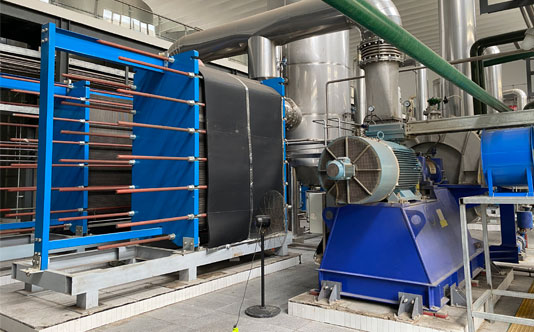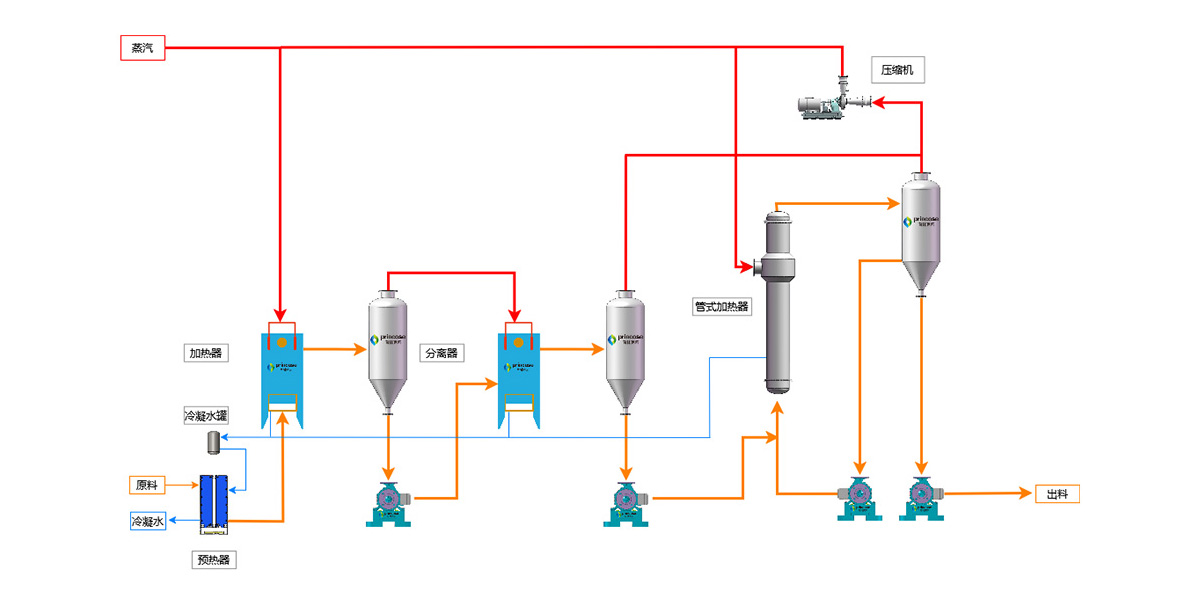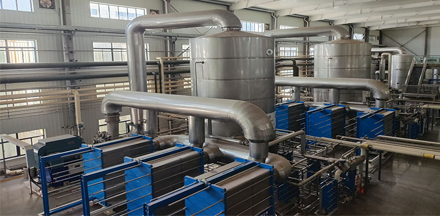The MVR evaporator (Mechanical Vapor Recompression) is a technology that utilizes a compressor to increase the energy of secondary steam, providing a heat source for the system and thereby reducing the demand for external energy. By compressing the secondary steam with a compressor, its pressure and temperature rise, and its enthalpy increases accordingly. This compressed steam is then sent to the heater of the evaporator to serve as a heat source, maintaining the evaporation state of the feed liquid. The heating steam itself transfers its heat to the material and condenses into water. In this way, the steam that would originally be wasted is fully utilized, recovering latent heat and improving thermal efficiency. Except for system startup, no live steam is required throughout the evaporation process. Compared to tubular MVR evaporators, plate MVR evaporators replace the tubular heaters with plate heaters.



The equipment is equipped with CIP (Clean-In-Place) cleaning lines, allowing for on-site cleaning. The entire set of equipment is easy to operate and has no dead corners.

Its compact structure and small footprint, combined with a low overall height, make it particularly suitable for retrofitting old factories or for use in spaces with limited availability.

Traditional multi-effect evaporators use fresh steam as an energy source, while MVR (Mechanical Vapor Recompression) evaporators consume electrical energy. Typically, evaporating one ton of water consumes between 17 and 23 kWh of electricity, and for materials with a relatively low boiling point elevation, the electricity consumption can be below 20 kWh per ton of water. The degree of energy savings is closely related to the local prices of fresh steam and electricity. In general, MVR evaporators can save over 60% of energy compared to five-effect evaporators.
Rich experience in process planning and equipment manufacturing
Customized Process Solutions
The project scope ranges from experimental testing of material parameters, to determination of process plans, to drawing, procurement, manufacturing, installation, debugging, training, and ultimately equipment delivery

Career
Professional
build Brilliant
Future
Proficient in industry/Achieving the future
